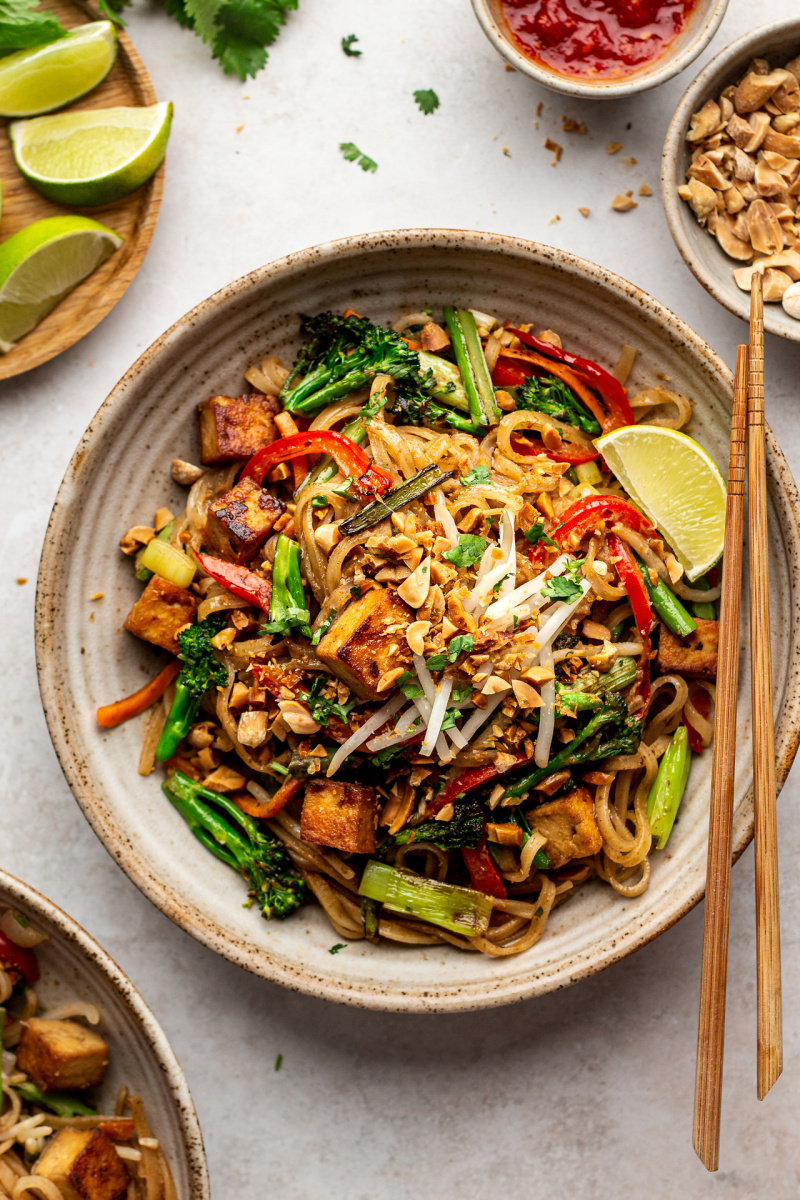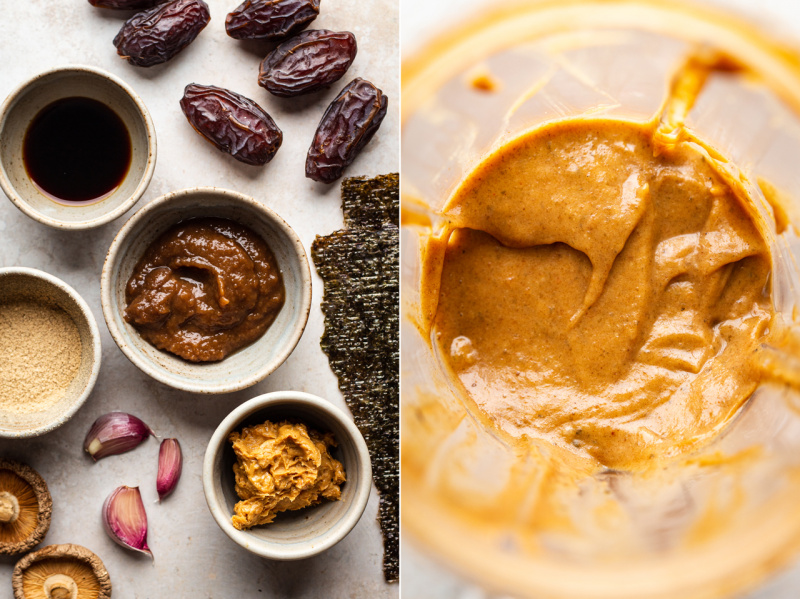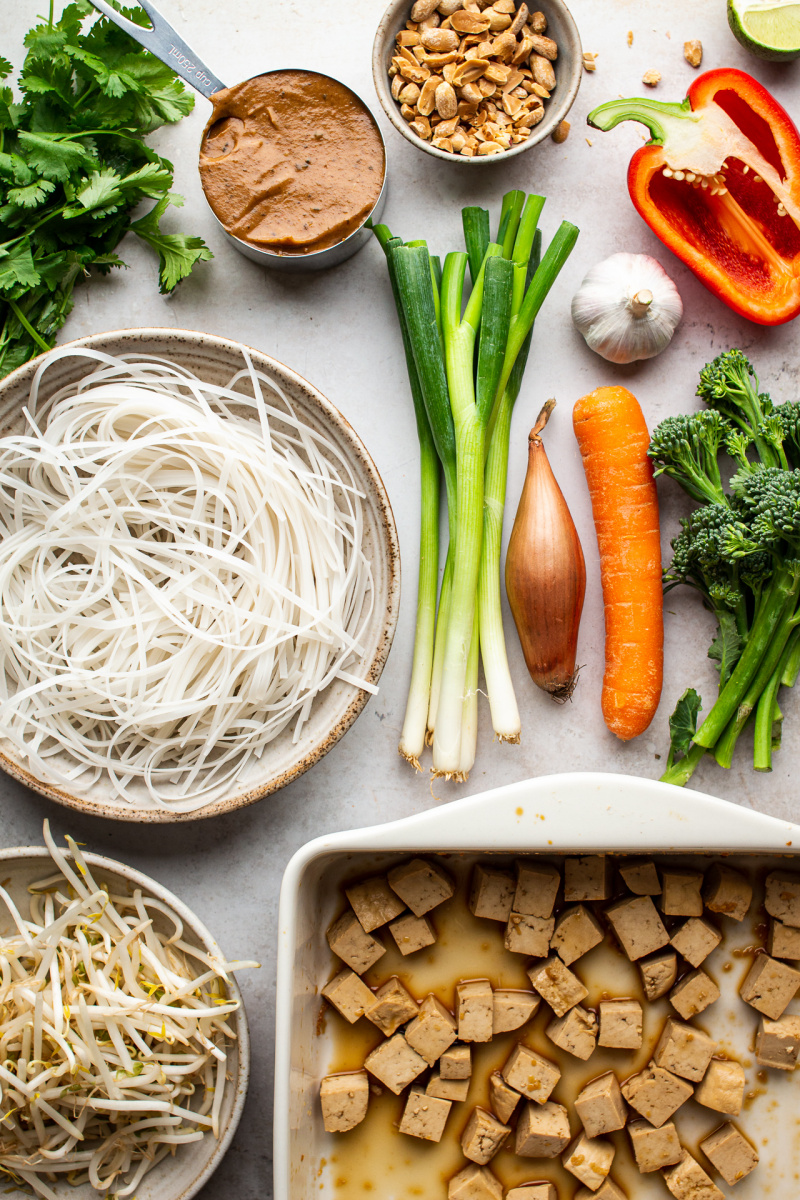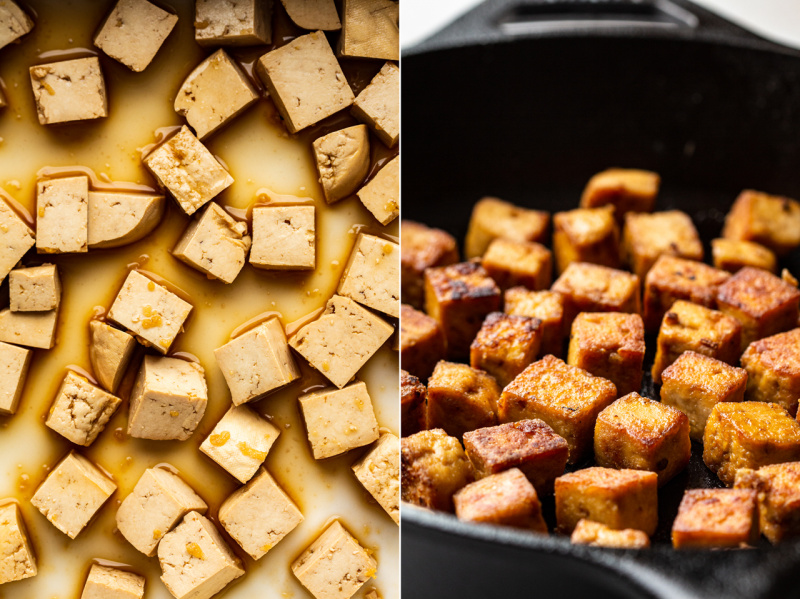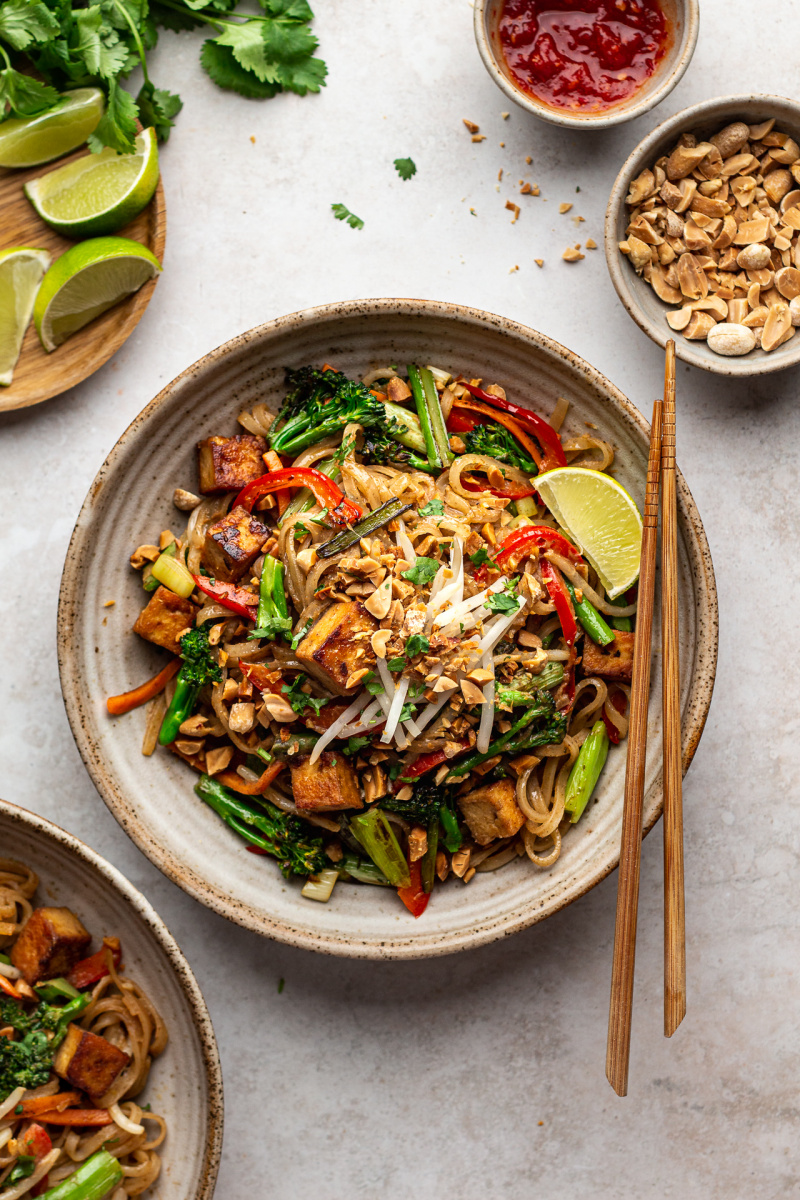Pad thai, who hasn’t yet fallen head over heels for this addictive concoction of flavours that triggers all the pleasure centres in the brain? I am a huge fan of this dish and have already attempted a vegan version years ago, but I realised that the reason I don’t make it often is because the sauce tends to include more sugar than my occasional morning stack of pancakes and while I love sugar, it somehow felt too indulgent for a regular midweek meal.
Since that realisation, I have been experimenting with replacing the sugar a traditional pad thai calls for with dates (and yes, I know they still contain sugar but it’s arguably better for you as it comes packaged up in an actual fruit, as nature intended it). If you are someone who won’t even have dates, then while I secretly admire your resolve, I’m sorry to say that there is no pad thai for you as pad thai rests on a beautiful interplay of sweet, sour and salty, which cannot be achieved if any of these three basic flavour components are missing. My initial attempts at a date sweetened pad thai sauce were a bit underwhelming texturewise, until I decided to add a healthy dollop of peanut butter. Although it is by no means a traditional ingredient, it improves the texture of the sauce hugely and does not detract from the dish’s signature flavours, especially that pad thai is served with lashings of roasted peanuts anyway. I further tried to add a bit more umami to this sauce, which is typically derived from fish sauce, so I’ve incorporated some aromatics, a touch of spice, a bit of mushroom powder (which is essentially dry shitake mushrooms ground up in my coffee grinder and sifted) and a bit of toasted seaweed (nori) for fishiness, but it’s okay if you don’t have any of these ingredients or are not a fan. Other than the sauce, pad thai is essentially a stir-fry. It’s a little component heavy so if you want to reduce your workload, make a big batch of the sauce in advance, portion it and freeze it for future use, use your favourite shop-bought tofu that has already been marinated and whack it in the oven instead of faffing over the skillet or simply increase the amount of veggies instead. We really enjoyed this dish and I hope you will too.
200 g / 7 oz 3 mm flat rice noodles (medium size) 2 tbsp / 30 ml stir-frying oil (I use rice bran) 100 g / 3½ oz tenderstem or regular broccoli, cut small 1 carrot, cut into matchsticks or sliced ½ red pepper, sliced thinly 1 shallot, diced finely 3 spring onions, white part sliced thinly and green part sliced into 2.5 cm / 1″ segments 3 garlic cloves, diced finely 100 g / 1 cup bean sprouts, cleaned 200 g / 7 oz fried / baked tofu, shop-bought or see below 2 tbsp crushed roasted peanuts fresh lime, to serve fresh coriander, to serve
TOFU (or use more veggies)
30 ml / 2 tbsp soy sauce or tamari, adjust to taste 15 ml / 1 tbsp maple syrup (or sugar) 20-30 ml / 1½-2 tbsp rice wine vinegar 1 garlic clove, minced 1 tsp finely grated ginger 200 g / 7 oz firm tofu, pressed 2 tbsp cornflour / cornstarch
TOFU
TRADITIONALLY palm sugar is used to sweeten pad thai. If using any sugar or maple syrup, feel free to skip the peanut butter and water to keep things more authentic but that means you’ll need to increase the amount of ingredients to create enough sauce for 200 g / 7 oz of noodles. My suggestion is ¼ cup / 4 tbsp sugar (needs to be melted into the other two ingredients), 5-6 tbsp tamarind concentrate and ¼ cup / 4 tbsp soy sauce.
